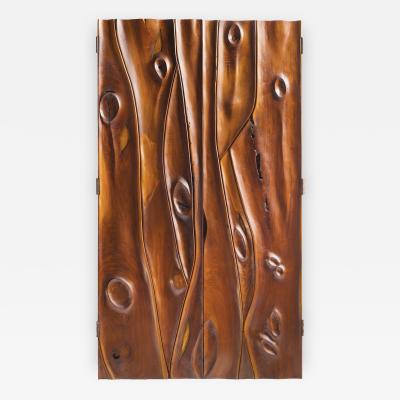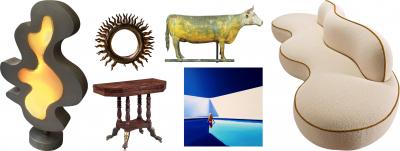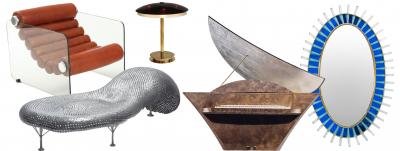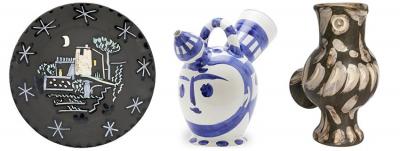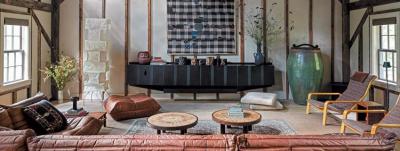A Family's Nakashima Collection Surfaces: Guy Regal to Conduct Sale
It’s the stuff of legend, the sort of drama that happens on an episode of Antiques Roadshow: a collection of pieces by a revered designer with a near-worshipful following, purchased directly from the maker’s studio, with irreproachable provenance and documentation. Thirteen pieces of George Nakashima furniture, the property of the late Drs. Gerald and Marie Lucas have surfaced as the Upper West Side townhouse they lived in has come up for sale, and the decision by the couple’s children to part with the collection was made. Guy Regal will be representing the pieces for the current owners and conducting the sale on their behalf through his gallery in the New York Design Center. All of the pieces have been authenticated, repaired as needed, and reconditioned by the Nakashima Studio, with documentation attesting to the fact. A formal announcement regarding their display and sale is forthcoming.
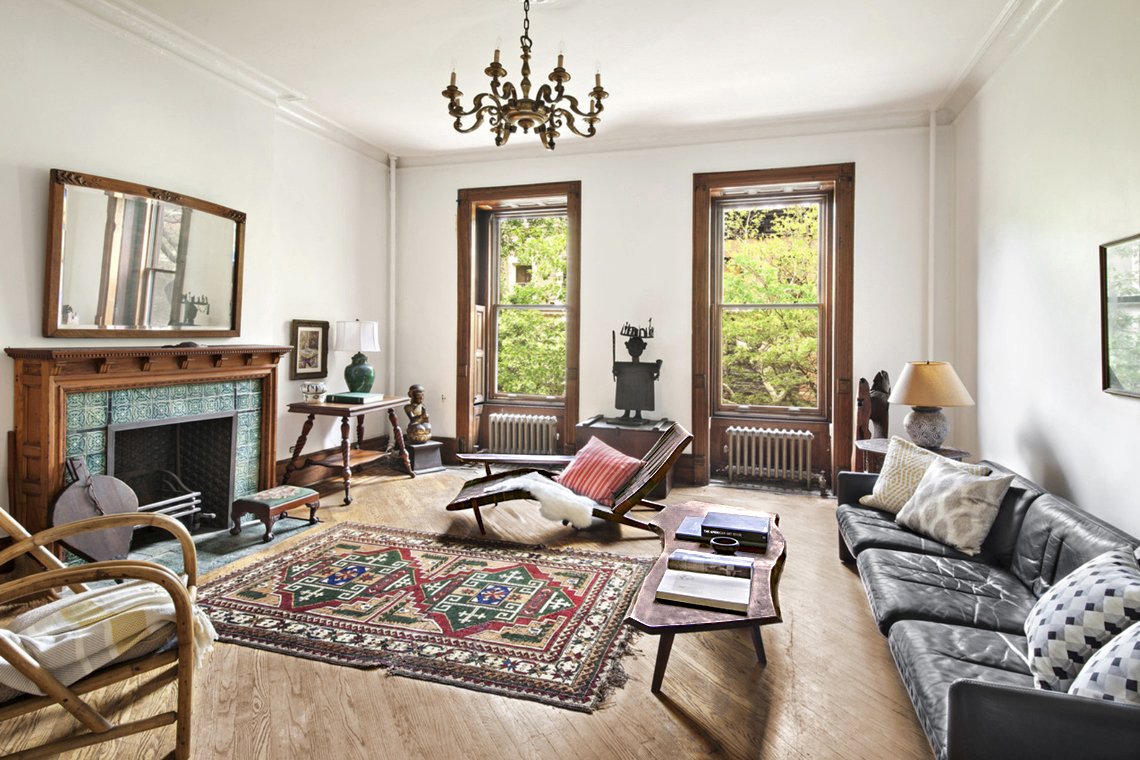 |
| The living room in the Lucas's townhouse, with one of the pair of rare Nakashima Long Chairs showing the original gray heather webbing, now replaced by the Nakashima Studio with natural color webbing to match the second Long Chair on offer. Also seen here, the Walnut Coffee Table from the Lucas's first order in 1959. The table has a large knot, secured with a signature Nakashima butterfly joint. Photo by Michael Weinstein, courtesy The Wall Street Journal |
 |
|  |
The Lucases ordered their chest of drawers during their first visit to the Nakashima Studio. It has six drawers, with two partitioned drawers. They likely chose the boards for the piece themselves, guided by George, during their visit to the studio.
|
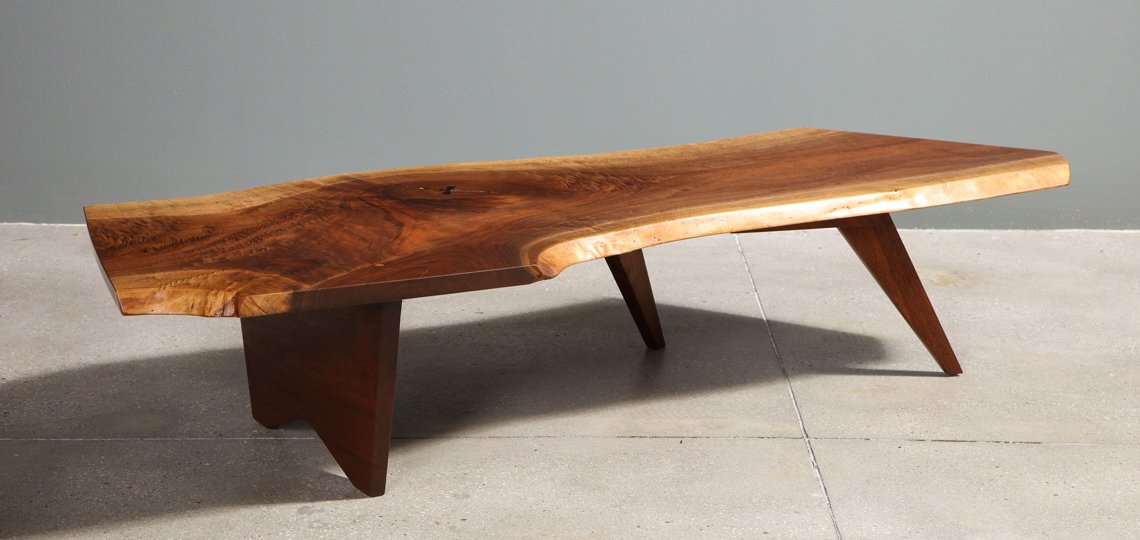 |
| Walnut coffee table , 1959 |
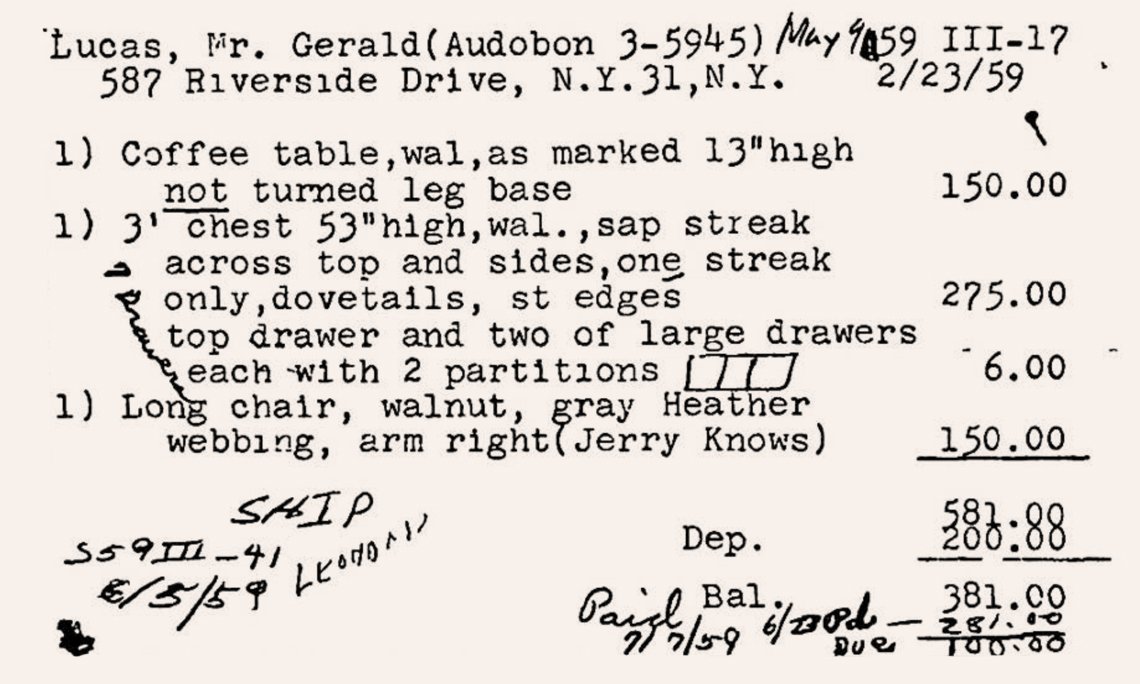 |
|  |
| Order cards with prices and annotations. Note the tiny sketch showing the partitions for the chest. At right, the order card for a second long (lounge) chair belonging to a friend, later sold to the couple. |
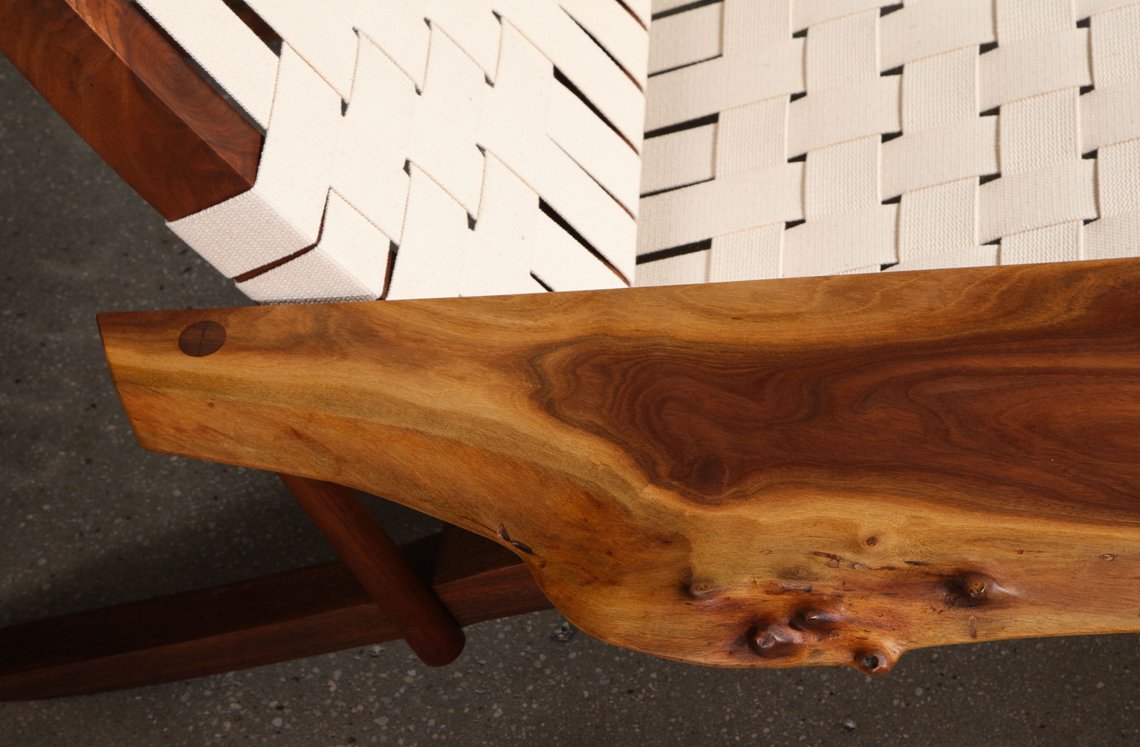 |
|  |
| Left: Detail of the live edge arm on a lounge chair. Right: Detail of a knot and the butterfly joint used to reinforce it on a coffee table. |
|  |
| George Nakashima |
George Nakashima is perhaps the most renowned and celebrated craftsman of the American Studio movement. His reverential approach towards the process and his respect for the timbers he used is expressed in his 1981 memoir “The Soul of a Tree,” where he wrote of his desire that the tree, once a living thing, would live on in an object of lasting beauty. He was known to contemplate boards for years, sometimes, saying that the wood would speak for itself, telling how it should be used. He’s best known for his slab tables with “live” or “free” edges, left with their natural contours to evoke the beauty and spirit of the tree. His pieces celebrate the grain, burls and fissures in the wood, which he reinforced with butterfly joints, and which were also employed to join slabs together for large tables. Nakashima did not invent the butterfly joint — it’s an old, traditional style of Japanese joinery — but has become so closely associated with it that it’s often referred to as a “Nakashima joint.” George Nakashima died in 1990; the Studio is now under the direction of his daughter Mira Nakashima, who trained under her father for 20 years. Mira is, as her father was, both an architect and designer. She shares his passion and reverence for the craft, continuing his legacy and walking in his footsteps.
 |
The Lucas's bedroom with the three pieces purchased from the studio in 1960, a walnut Nakashima Platform Bed and walnut Storage Headboard, with a walnut Spindle Shelf End Table. Photo by Michael Weinstein, courtesy The Wall Street Journal |
 |
|  |
| Left: The Nakashima walnut Spindle Shelf End Table Right: The original 1960 order card from George Nakashima Woodworkers studio for the pieces pictured in the bedroom above. |
 |
Nakashima walnut Platform Bed with the Storage Headboard, purchased in the Lucas's second order placed in July of 1960.
|
 |
|  |
Details of the headboard, showing the sap streak as noted in the order card and exquisite joinery, Nakashima style
|
The very personal connection to the pieces is a remarkable story, its humble beginnings a story of a time past, not likely to be repeated. Dr. Lucas and his wife Marie, both psychoanalysts, purchased the core 11-piece collection between February 1959 and November 1963 to furnish their home on Riverside Drive, with two additional pieces purchased individually from friends in later years. In 1963 they moved to 112 West 87th Street on the Upper West Side, where they founded the Institute For Modern Psychoanalysis and raised their three children. Gerald and Marie ran with an intellectual, artistic crowd and it was amongst their friends that they learned of the furniture made by master craftsman George Nakashima in his studio in the Pennsylvania woods. Appreciation for Nakashima’s organic naturalism and Zen-like design process was a compelling attraction, and his designs were seen as unique and more interesting than the already ubiquitous Scandinavian modern genre. An appointment was made to visit the studio and the couple traveled to New Hope, Pennsylvania in February of 1959 to meet with George and his wife Marion, with a plan to discuss their preferences and place an order. After lengthy and intimate discussion, they chose three pieces: a coffee table, a chest of drawers and a now exceedingly rare long (lounge) chair, for a total price of $581. A deposit of $200 was paid, and in early June 1959 the pieces were shipped to the Lucases. The balance of $381 was paid in two installments, the first for $281 and a second of $100. That Gerald and Marie delighted in their new furniture is clear, they added to their collection in the ensuing years, ordering again in July of 1960, September 1963 and November 1963. They bought a second long chair from a friend, who had purchased it in 1961 for $150. Their final acquisition came about in 1996, when they purchased a magnificent bookmatched walnut Frenchman’s Cove dining table from another friend in New Jersey. It turned out to be a prudent investment for their friend; he paid $300 in 1967 and sold it for $6,000 to the Lucases.
 |
|  |
Conoid chair
|
 |
A second walnut Coffee Table .
|
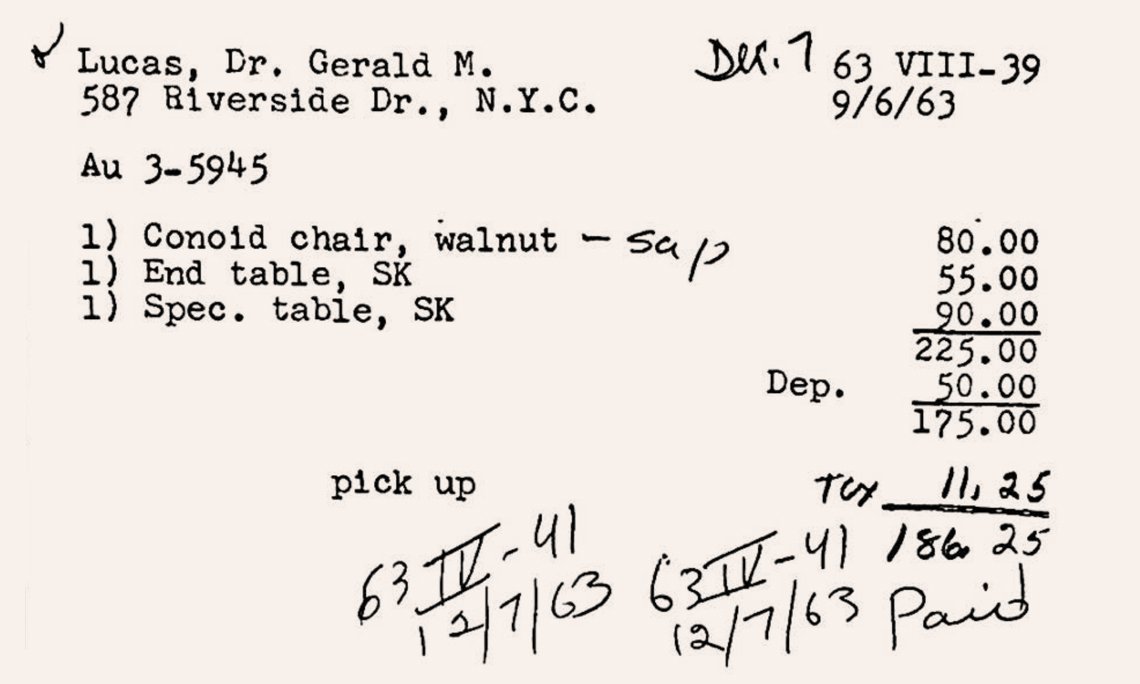 |
|  |
| Left: An order card, listing a second coffee table as "Spec. table." That sort of inconsistency was typical in the early years at the Studio, then essentially a "Mom and Pop" business where George Nakashima's wife Marion handled the record keeping. Right: More exquisite details; a corner of the second Coffee Table. |
The outcome of that meeting and the additional orders, four in total, is documented in the original order cards, complete with the now incomprehensibly modest prices, ranging from $55 (about $475 in 2019 dollars) for an end table (not available), to the most expensive piece, a walnut highboy, for which they paid the princely sum of $275, with an extra $6 charged for two partitions in two of the drawers (about $2,300 in 2019 dollars). The order cards themselves are a time capsule, containing, as they do, the old New York City phone extension AUdubon-3 (remember Elizabeth Taylor and BUtterfield 8?), typed on unlined index cards with a manual typewriter, and heavily annotated with now-cryptic instructions — “Jerry Knows,” a tiny sketch of drawer partitions, many corrections and cross-outs.
The Lucas family lived and worked in their Victorian townhouse, decorated with their Nakashima treasures and an eclectic mix of antiques, mass-market furnishings, oriental rugs, some abstract prints and a bit of African art. The rarity of the collection is underscored by the circumstances of it coming as it does, all from one home, loved and enjoyed by a family for over 60 years. The current owner, the son of the Lucases has said…we knew it was special, but to us, it was really just our furniture in our home.
 |
The Nakashima Frenchman’s Cove Dining Table was purchased in 1996 from a friend, and at the head and foot of the table, 1963 Nakashima New Chairs in sap walnut, the lighter sap streaks creating a contrast to the darker heartwood. Photo by Michael Weinstein, courtesy The Wall Street Journal
|
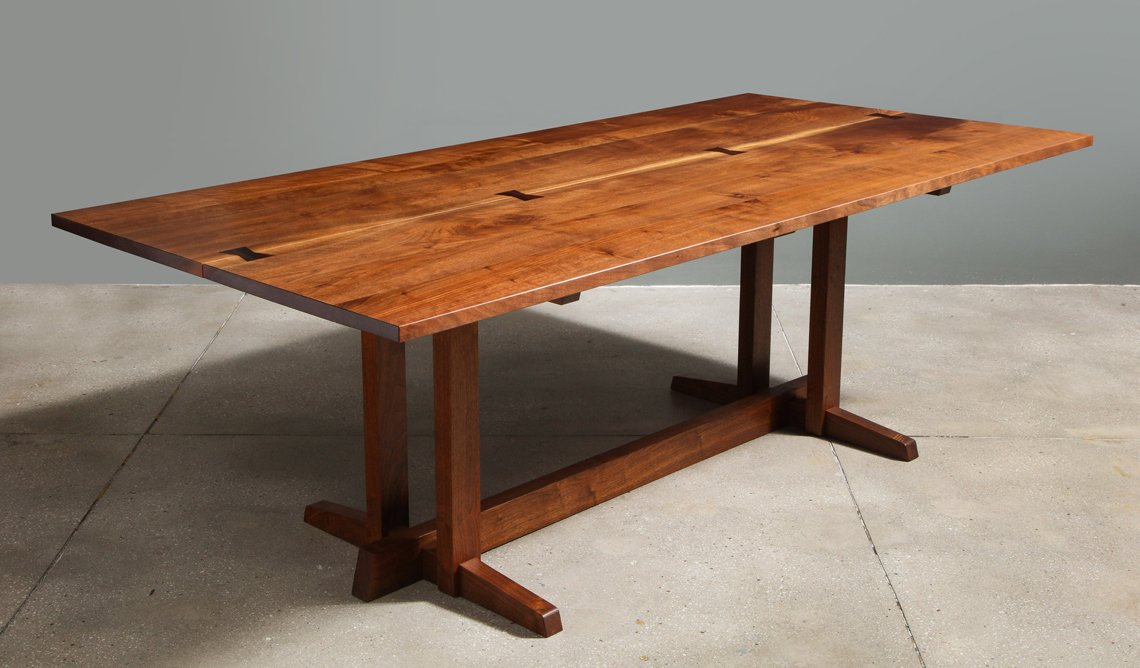 |
| The walnut Frenchman's Cove Dining Table with four rosewood butterfly joints. |
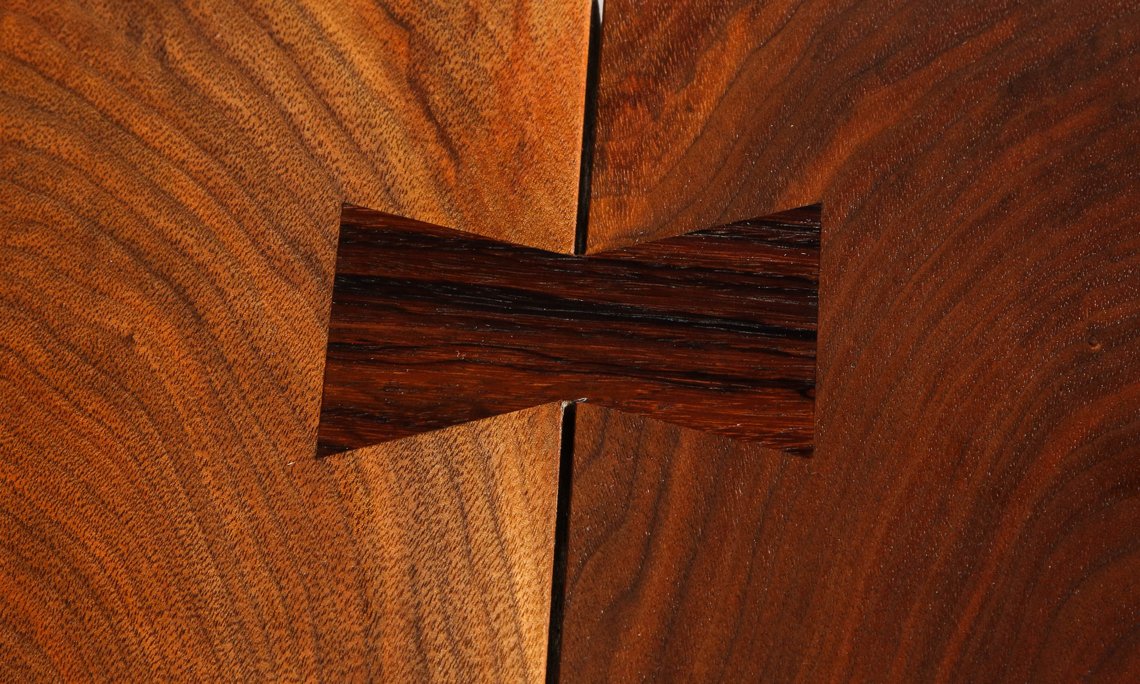 |
| 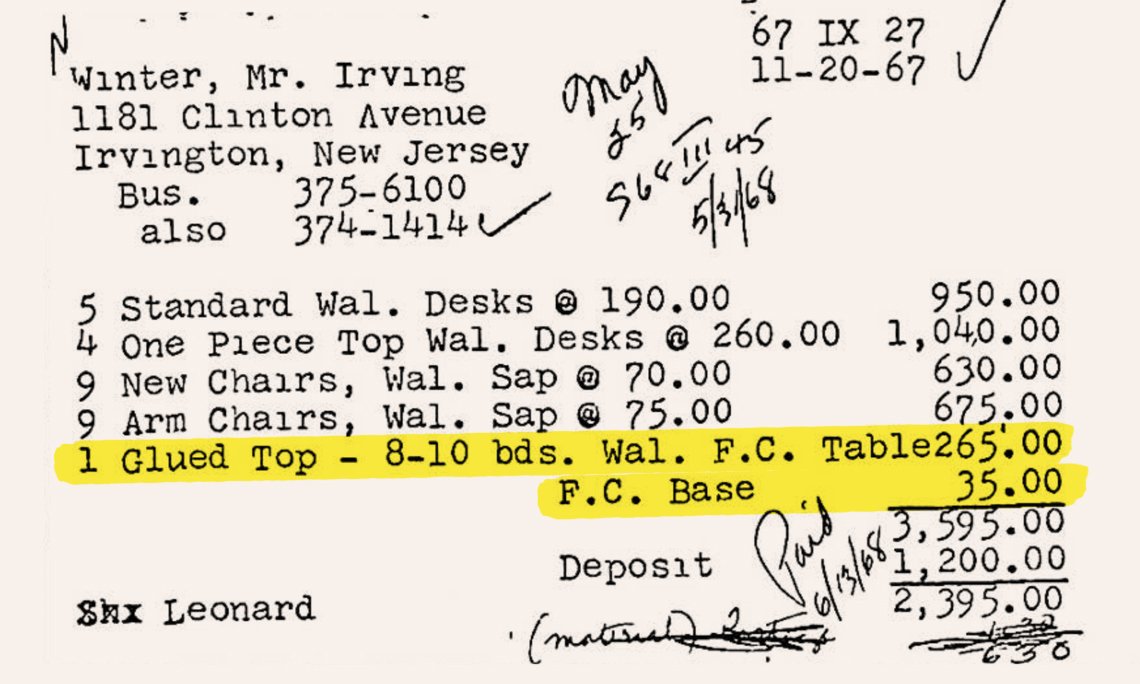 |
Left: A detail of the dining table's bookmatched walnut boards. Right: The Lucases bought their dining table from a friend, who had purchased it from the Nakashima Studio in 1967, seen highlighted on the original order card.
|
 |
|  |
| A handwritten receipt for the dining table transaction. |
 |
|  |
The Lucas's last order from the Nakashima Studio was in 1963, when they purchased two New Chairs of sap walnut. The sap streaks are distinctive characteristics of the Nakashima style, which celebrated the natural beauty in the wood.
|
Added to the backstory of the collection is how it came to the attention of Guy Regal, a tale of kismet, or something like it. His daughter and the Lucases granddaughter, now of college age, attended middle school together. Guy and the granddaughter's parents became acquainted at school functions, and after years without contact, recently reconnected through mutual friends. The subject of the collection and the intent to sell it was discussed, and an arrangement was made. Mr. Regal estimates the total value of the collection at $450,000.
About Guy Regal
For over 30 years, Guy Regal has been a leading dealer of fine 18th, 19th, 20th and 21st century furniture, decorative accessories, and fine art. His goal has always been to juxtapose contemporary art and sculpture with decorative arts of all periods. Over the years Mr. Regal, his gallery and his collection has been featured in major publications, homes and show houses.
VIEW ALL OF GUY REGAL'S OFFERINGS ON INCOLLECT















































